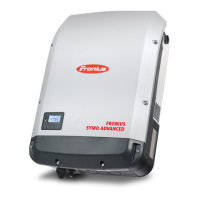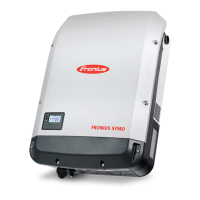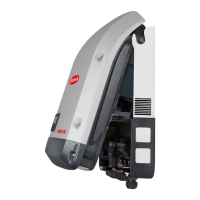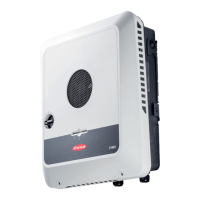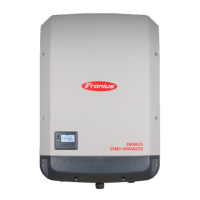When configuring the photovoltaic system, make sure that all components are
operating completely within their permitted operating range.
All measures recommended by the solar module manufacturer for maintaining
solar module properties must be followed.
Follow all grid operator regulations regarding grid power feed and connection
methods.
Location Selec-
tion
Please note the following criteria when choosing a location for the inverter:
The inverter is suitable for indoor installation.
The inverter is suitable for outdoor installation.
Because of its NEMA 4X protection class, the inverter is not sus-
ceptible to hose water on any side and can also be operated in
moist environments. However:
In order to keep inverter heating as low as possible, do not ex-
pose the inverter to direct sunlight. The inverter should be in-
stalled in a protected location, e.g., near the solar modules or
under an overhanging roof.
10.0-3 - 12.0-3 208-240
U
DC max
0 - 11154 ft.
(0 - 3400 m)
ft. (m)
600 V
1000 V
0 - 6561 ft.
(0 - 2000 m)
> 8202 - 9842 ft.
(> 2500 - 3000 m)
> 6561 - 8202 ft.
(> 2000 - 2500 m)
> 9842 - 11154 ft.
(> 3000 - 3400 m)
950 V
900 V
850 V
U
DC max
ft. (m)
10.0-3 - 24.0-3 480
IMPORTANT! The inverter must not be installed or operated
above an altitude of 11,154 ft. (3400 m).
The maximum permissible DC voltage of the inverter depends
on the altitude.
U
DCmax
at an altitude of:
Symo 10.0-3 – 12.0-3 208–240
0 to 11,154 ft ( 0 to 3400 m). = 600 V
Symo 10.0-3 – 24.0-3 480
0 to 6561 ft ( 0 to 2000 m). = 1000 V
6531 to 8202 ft (2000 to 2500 m). = 950 V
8202 to 9842 ft (2500 to 3000 m). = 900 V
9842 to 11,154 ft (3000 to 3400 m). = 850 V
The output power reduces when the device temperature is too
high, and this may occur earlier than normal at increased alti-
tudes.
Do not install the inverter:
-
where it may be exposed to ammonia, corrosive gases, acids,
or salts
(e.g., fertilizer storage areas, vent openings for livestock
stables, chemical plants, tanneries)
8

